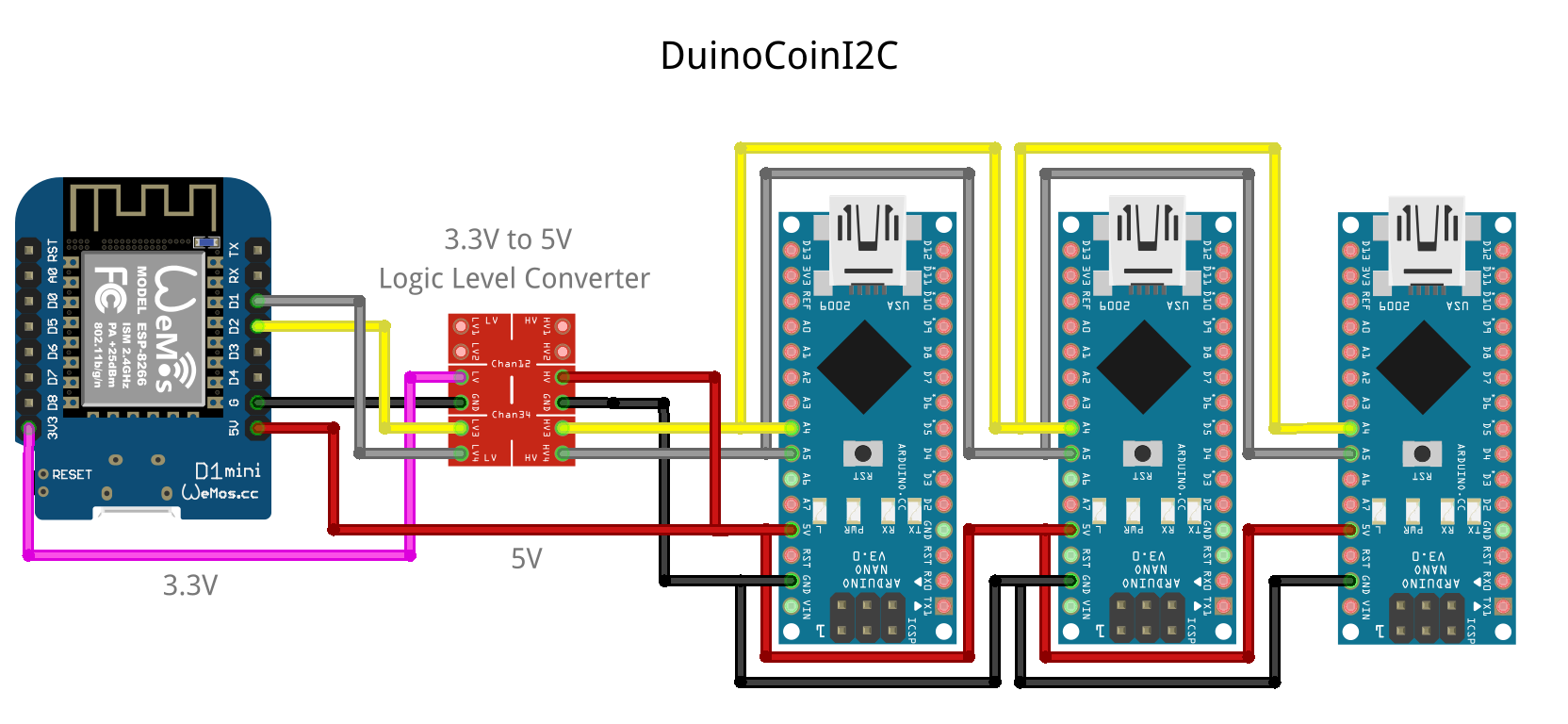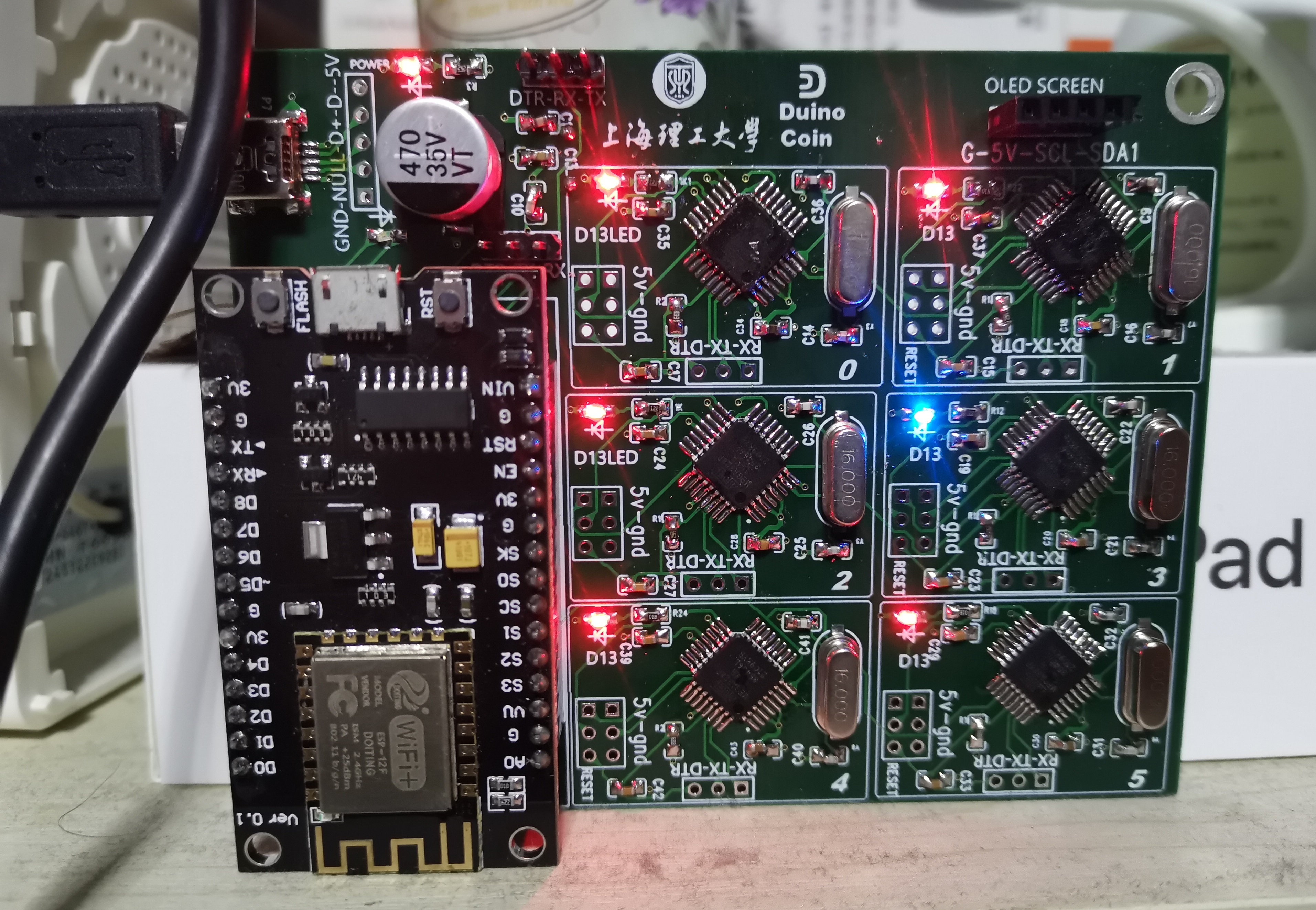DuinoCoinI2C
This project design to mine Duino-Coin using an Esp8266/Esp32 as a master and Arduino as a slave.
Using the I2C communication to connect all the boards and make a scalable communication between the master and the slaves.
Version
DuinoCoinI2C Version 2.7
Arduino - Slave
All Slaves have the same code and should select the I2C Address automatically.
Library Dependency
- DuinoCoin (Handle the
Ducos1ahash work) - ArduinoUniqueID (Handle the chip ID)
- StreamJoin (StreamString for AVR)
Automatic I2C Address
The I2C Address on the Arduino is automatically updated when the board starts, if an Address already exists on the I2C bus the code finds another Address to use.
Tiny - Slave
Tiny Slaves have the same code and the I2C Address is selected by the EEPROM.
Library Dependency
- ArduinoUniqueID (Handle the chip ID)
Defines
The code has some defines to make the code smaller and disable some features.
Serial
This enable the Serial Monitor.
#define SERIAL_LOGGER Serial
LED
This enable the led output and makes de led flash when the slave is working.
#define LED LED_BUILTIN
Serial set I2C Address
If the Serial is enable on your mcu, you could send the I2C Address using the Serial Monitor.
ATtiny85 - ATTinyCore
You could use this code to generate a ATtiny85 slave using the http://drazzy.com/package_drazzy.com_index.json boards on the Arduino IDE.
Check the ATTinyCore project for more information.
I2C pinOut
| pinOut | ATtiny85 |
|---|---|
SCL |
PB2 |
SDA |
PB0 |
I2C Address
I2C Address is selected by the EEPROM_ADDRESS (default 0) and the first upload the Address is set by the define.
#define ADDRESS_I2C 1
Esp8266/Esp32 - Master
The master requests the job on the DuinoCoin server and sends the work to the slave (Arduino).
After the job is done, the slave sends back the response to the master (Esp8266/Esp32) and then sends back to the DuinoCoin server.
Library Dependency
- ArduinoJson (Request Pool Version 2.6)
- ESPAsyncWebServer (ESPAsyncWebServer)
- ESPAsyncTCP (ESP8266)
- AsyncTCP (ESP32)
- SSD1306Wire (SSD1306Wire)
Max Client/Slave
The code supports 10 clients and can be changed on the define:
#define CLIENTS 10
Connection Pinouts
Connect the pins of the Esp8266 or Esp32 on the Arduino like the table/images below, use a Logic Level Converter to connect between the ESP and Arduino.
| ESP8266 | ESP32 | Logic Level Converter | Arduino | |
|---|---|---|---|---|
| 3.3V | 3.3V | <---> | 5V | |
| GND | GND | <---> | GND | |
SCL |
D1 (GPIO5) | GPIO22 | <---> | A5 |
SDA |
D2 (GPIO4) | GPIO21 | <---> | A4 |
Custom PCB
ericddm shared this amazing pcb!
Do you like this project? Please star this project on GitHub!

